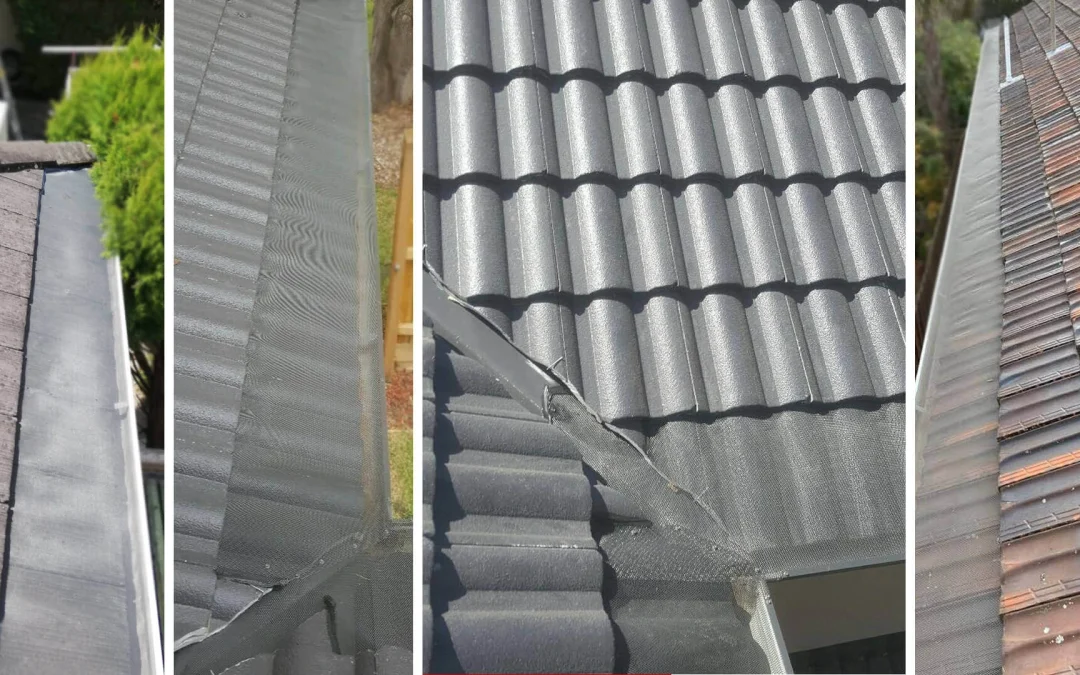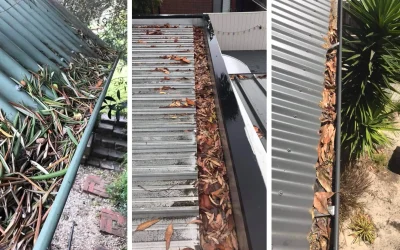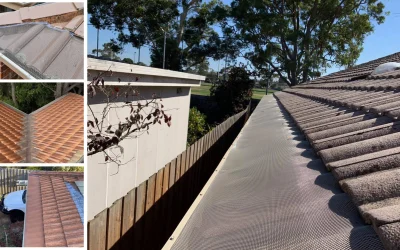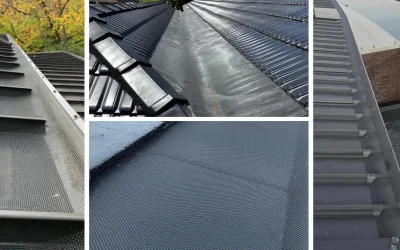Terracotta roofs are Aussie icons. Think Federation cottages, Californian bungalows, Queenslanders and villas with warm clay tiles and ornate details 🧱. They look magic, but they’re fussy about water. Leaves, twigs and possums love them too. That’s where the right Leaf Guard comes in.
This guide breaks down what works on heritage and terracotta roofs, why it works, and the traps to avoid. Short, clear, and helpful. No fluff. No big promises. Just practical tips you can use today.
Why terracotta and heritage roofs need special care
Terracotta tiles are tough against sun and time, yet surprisingly easy to crack if you step wrong. That matters when you’re installing or maintaining any guard on a tiled roof. Professional access and safe methods reduce the risk of breakage and keep your roof watertight ⚠️.
On heritage homes, the roof is part of the building’s character. Councils often ask you to keep original materials and appearance, and they may require approval for visible changes. Always check local heritage rules before you start work, especially in conservation areas ✅.
Good drainage is not optional on old houses. Poorly managed stormwater can lead to rising damp, movement and cracked masonry. Keeping gutters and valleys clear is a front-line defence. Some heritage guidance even calls out leaf guards at outlets and well sized box gutters as part of best practice for longevity.
What a Leaf Guard must do on terracotta roofs
- Keep debris out without blocking rain
Eucalypt leaves, jacaranda flowers and pine needles behave differently. A fine Gutter Guard Mesh over gutters and roof valleys helps shed debris while letting water pass. Valley mesh is especially useful on tiled roofs, where valleys catch more litter than the gutters themselves 🌧️. - Handle bushfire embers where required
In bushfire-prone areas, an ember guard is a specific thing. The Australian Standard (AS 3959) calls for a non-combustible mesh with maximum 2 mm aperture. Some products marketed as gutter guards will not meet ember guard specs, so check the mesh size and material before you choose 🔥. - Play nice with heritage character
A low-profile, colour-matched mesh tucked neatly under the second row of tiles preserves the look from street level. Systems designed for tile roofs use trims on the gutter lip and slip under tiles for a clean line that blends with heritage façades 🙂. - Avoid corrosion traps
Mixing metals can create galvanic corrosion, especially near the coast. Match the Metal Gutter Guard and fixings to compatible materials, and be careful around copper, bronze or untreated steel details. Salt plus dissimilar metals equals trouble.
What to avoid on heritage and terracotta roofs
- Bulky plastic covers that are visible from the street and can fade or warp in heat.
- Insert brushes that hold wet debris against the tiles. These can be hard to clean on high or complex roofs.
- Random fasteners that pierce tile crowns. A tile-roof system should rely on trims at the gutter and slipping mesh under tiles, not drilling through visible surfaces.
- Unplanned metal mixes at trims, screws and flashings. Use compatible metals and quality coatings to limit corrosion risk near sea air.
Bushfire compliance
- Gutter guards are optional in the Standard, but if you fit one in a bushfire-prone area, it needs to comply.
- Ember guard definition: a cover that stops embers getting into openings. For mesh, max 2 mm aperture and suitable non-combustible material.
- Your checklist: confirm BAL rating, check the product data sheet for aperture and metal, and keep gutters free of debris for ongoing performance.
These points come straight from Australian guidance on gutter guard compliance and ember guards.
Approvals and heritage etiquette
Every council is different. Many heritage fact sheets ask owners to maintain original roof character and to get advice before visible changes. Some maintenance can be pre-approved or done under minor-works processes, but you generally need written confirmation first. A quick chat with the heritage advisor saves headaches later 👍.
Installation notes that save tiles and stress
- Let the pros walk the roof. Terracotta cracks if the load goes in the wrong spot. The safest path and gear matter.
- Use the right system for tiles. For a tidy finish, trims fix to the gutter lip, mesh runs over, and the edge slips under the second tile course.
- Add valley mesh in leaf-heavy spots.
- Plan for safe access. Falls are a risk, even for “simple” gutter jobs. A professional install reduces exposure.
Safety and method are well covered by Australian guidance for roofing work on tiles.
Picking the right product: a quick checklist
- Primary need: Leaf Guard that fits tile roofs and suits heritage aesthetics.
- Aperture: Fine mesh where needles or tiny leaves fall. 2 mm max if you need ember-guard performance under AS 3959. 🔥
- Material: Powder-coated aluminium for most tile roofs. Consider steel or bronze only where needed for ember guard or specific detailing. Mind galvanic pairs. 🌊
- Finish: Colour-match trims to existing gutters to keep the period look.
- Coverage: Do gutters plus valleys for best drainage on tiled roofs.
- Compliance: In BAL areas, confirm the mesh spec on the data sheet says 2 mm max aperture and the right metal.
- Approvals: If your home is listed or in a heritage precinct, check council advice before visible works. 📝
How CPR Gutter Protection can help
We work on terracotta and heritage homes across Victoria and understand the balance between performance and street appeal. We use Gutter Guards and Gutter Guard Mesh systems that are designed for tile roofs, and we can supply colour-matched trims and valley solutions. If you live in a bushfire-prone area, we can guide you through mesh options that meet the 2 mm ember-guard requirement and fit the style of your home 🙂.
Want tailored advice for your place? Reach out for a practical plan that suits your roof and your council area.
Quick FAQs
1. Will a Leaf Guard change how my heritage roof looks?
2. Do I need council approval?
3. What mesh size should I choose?
4. Do I need valley mesh on a terracotta roof?
Social Share:
Related Posts
How Leaf Guards Protect Against Australia’s Summer Storm Debris?
Each Australian summer brings not only warmth and sun but also the threat of severe storms…
How Gutter Guards Prepare Your Home for the Australian Autumn Leaf Fall?
Autumn in Australia brings a beautiful change in colour, but it also brings a flood of fallen…
How to Choose the Best Leaf Guard for Your Roof Type?
Keeping your gutters clean is essential for protecting your home from water damage…





